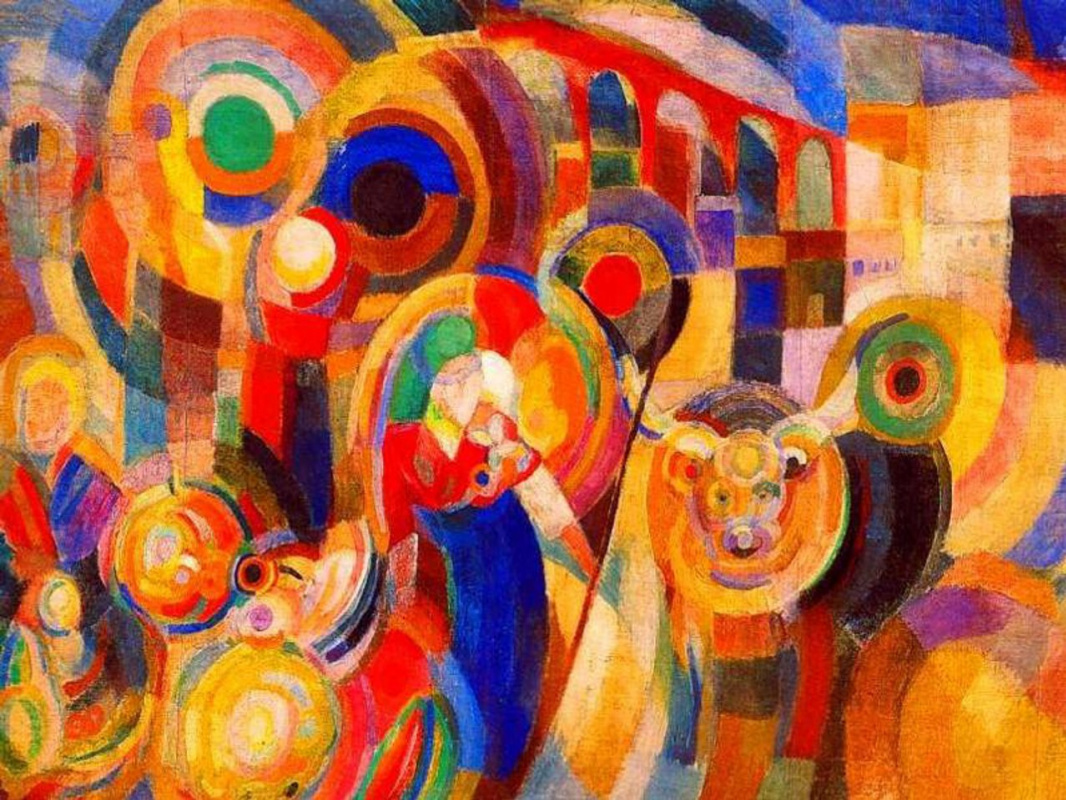log in
Enter site
Login to use Arthive functionality to the maximum
Market at Minho
Sonia Delaunay • Painting, 1915, 127.5×92.5 cm
Description of the artwork «Market at Minho»
In 2002, at the auction house Calmels Cohen in Paris, Marché au Minho (Market at Minho) went for 4.59 million euros, which was five times higher than the upper limit of the estimate. The buyer preferred to remain anonymous, but there have been persistent rumors about that big Sonia Delaunay enthusiast being Russian.
The Market at Minho is painted in the style of Simultanism, which is an offshoot of Cubism, invented by Sonia and her husband Robert Delaunay. This offshot, be it noted, was quite circular and bright. Simultanism is one of the first manifestations of Abstract art. Its main method is the use of concentric “solar" circles. The poet Guillaume Apollinaire named this style Orphism in reference to Orpheus, the poet of ancient Greek mythology, and the undoubted "sounding" of the simultanist paintings. Sonia Delaunay's paintings are particularly musical and expressive.
Sonya Delaunay’s Market at Minho contains a number of geometric shapes, which makes it similar to the works of the Cubists. Unconditional dynamism of the image refers to the Futurists, while the "wild" rave of colour indicates that Simultanism wasn't deprived of Fauvist influence.
The artist created this artwork in Spain. The most clearly defined object there is a bull. The muzzle of the bull in the centre on the right is easily identified, but there is nothing bloody about it; the expression of the painting is far from the one of bullfighting. It’s a market, noise and hubbub. In the centre and on the left one can distinguish the human figures, however, they can also seem indistinguishable, since they are not as irrevocable as the bull's muzzle.
Looking at the picture, we seem to fall into this bright, hot, colourful space, which has absorbed the atmosphere of the Sunday market in the provincial southern city, coloured clothes, loud voices of merchants and appetizing savers.
The artist used a technique of simultaneity (placing contrasting colours next to each other) that made her fabrics so popular. Red and blue, orange and green, purple and terracotta combine so well that the term "sound vibrations" is no longer just words – these colours really sound.
Author: Alena Esaulova
The Market at Minho is painted in the style of Simultanism, which is an offshoot of Cubism, invented by Sonia and her husband Robert Delaunay. This offshot, be it noted, was quite circular and bright. Simultanism is one of the first manifestations of Abstract art. Its main method is the use of concentric “solar" circles. The poet Guillaume Apollinaire named this style Orphism in reference to Orpheus, the poet of ancient Greek mythology, and the undoubted "sounding" of the simultanist paintings. Sonia Delaunay's paintings are particularly musical and expressive.
Sonya Delaunay’s Market at Minho contains a number of geometric shapes, which makes it similar to the works of the Cubists. Unconditional dynamism of the image refers to the Futurists, while the "wild" rave of colour indicates that Simultanism wasn't deprived of Fauvist influence.
The artist created this artwork in Spain. The most clearly defined object there is a bull. The muzzle of the bull in the centre on the right is easily identified, but there is nothing bloody about it; the expression of the painting is far from the one of bullfighting. It’s a market, noise and hubbub. In the centre and on the left one can distinguish the human figures, however, they can also seem indistinguishable, since they are not as irrevocable as the bull's muzzle.
Looking at the picture, we seem to fall into this bright, hot, colourful space, which has absorbed the atmosphere of the Sunday market in the provincial southern city, coloured clothes, loud voices of merchants and appetizing savers.
The artist used a technique of simultaneity (placing contrasting colours next to each other) that made her fabrics so popular. Red and blue, orange and green, purple and terracotta combine so well that the term "sound vibrations" is no longer just words – these colours really sound.
Author: Alena Esaulova



